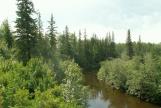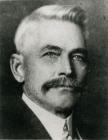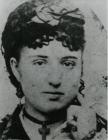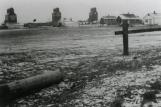1
Redwater River as it nears the North Saskatchewan RiverCirca 2006
Redwater, Alberta, Canada
 Credits:
Credits:Rosemary Neathway
2
Vast rolling prairies and heavily wooded forests greeted the homesteaders as they began their quest for free farmland. In 1886 the survey of the area north of the vast North Saskatchewan River was initiated and completed in 1906. The western Canadian land grants lured newcomers from the eastern provinces, the United States, as well as many eastern European countries. The brave souls who left their homelands in Europe hoped for a better way of life. Many of them were impoverished and arrived on Canadian soil with barely a trunk holding all of their worldly possessions. The Redwater area, of Alberta attracted settlers from many races and walks of life. Polish, Ukrainian, English, French and Japanese settlers, to name a few. These settlers set to the task of taming the soil and settling in a new land.5
Plentiful water, large tracts of forest, and good soil were desirable assets as the homesteaders bent their backs building houses and barns. One of the earliest families to settle in the area was Samuel and Amelia Cook. They had traveled from New Brunswick first settling in the Partridge Lake district of Alberta. In 1895 Samuel traveled east along the North Saskatchewan River on a raft and found a desirable location near a small river that spilled into the North Saskatchewan. He first settled on the south side of the river but opted to farm on the north side. Samuel's raft proved to be a valuable asset. He would often ferry other newcomers across the river. Mail was either brought up river by raft or Fort Saskatchewan stagecoach until 1907 when a post office was opened. Samuel Cook became the first Postmaster. This area soon became known as Cookville, a small store nearby was named after Amelia Cook.6
Home owned by Sam and Amelia Cook on the banks of the North Saskatchewan RiverCirca 2000
Redwater, Alberta, Canada

7
To the northwest of Cookville another settlement was emerging. The area that was to become known as Redwater was struggling to become a hamlet. A post office opened in 1906, one mile east of where the small hamlet of Redwater would spring up. Edward Brown was the first Postmaster of the Redwater post office. It was his wife Hannah who gave the name Redwater after noting the reddish tinge of iron oxide in the water of the small river that meanders through the countryside. The name Redwater would also be given to this small river that tumbles down to the North Saskatchewan River very near where Samuel Cook first settled.Sam and Amelia raised a large family and many descendants still live in this area. The Cook name is indelibly etched on this area of Alberta. One son Maurice Cook farmed a few miles northwest of the original homestead. This farm would become the hamlet of Redwater when it was established in 1918 Another son Hilton Cook also set to farming a few miles northeast of his brother Maurice. It was on Hilton Cook's farm where oil was first discovered.


